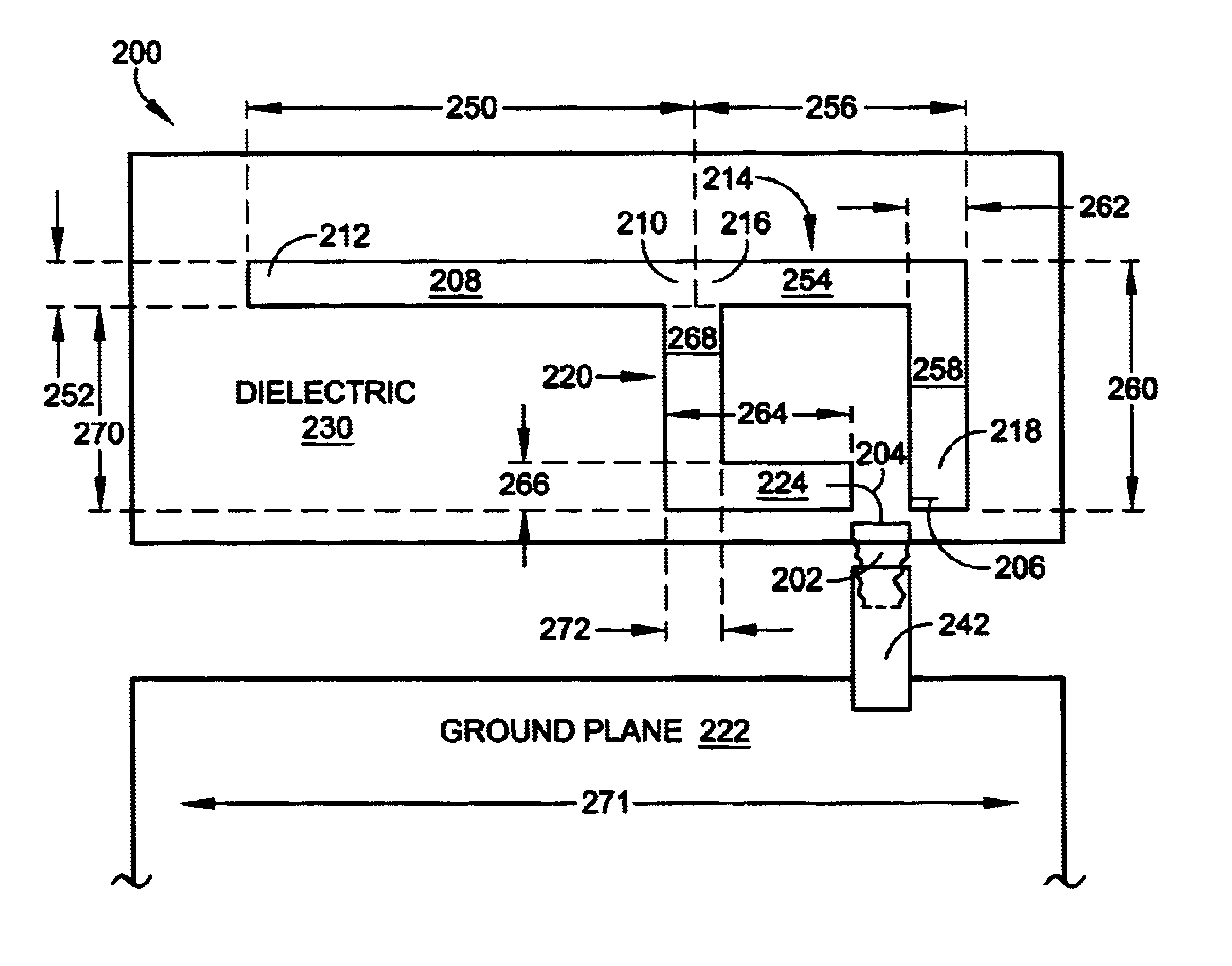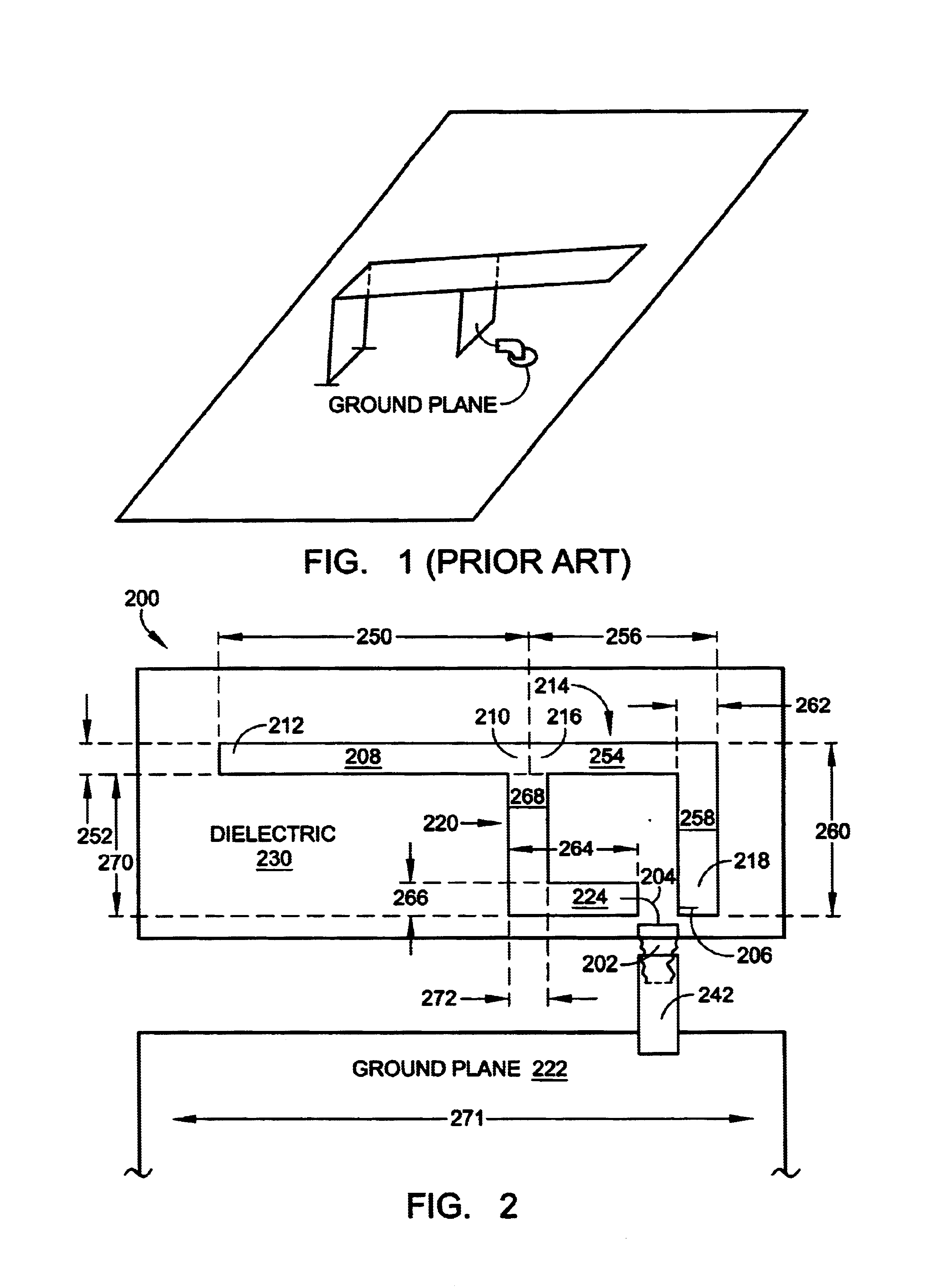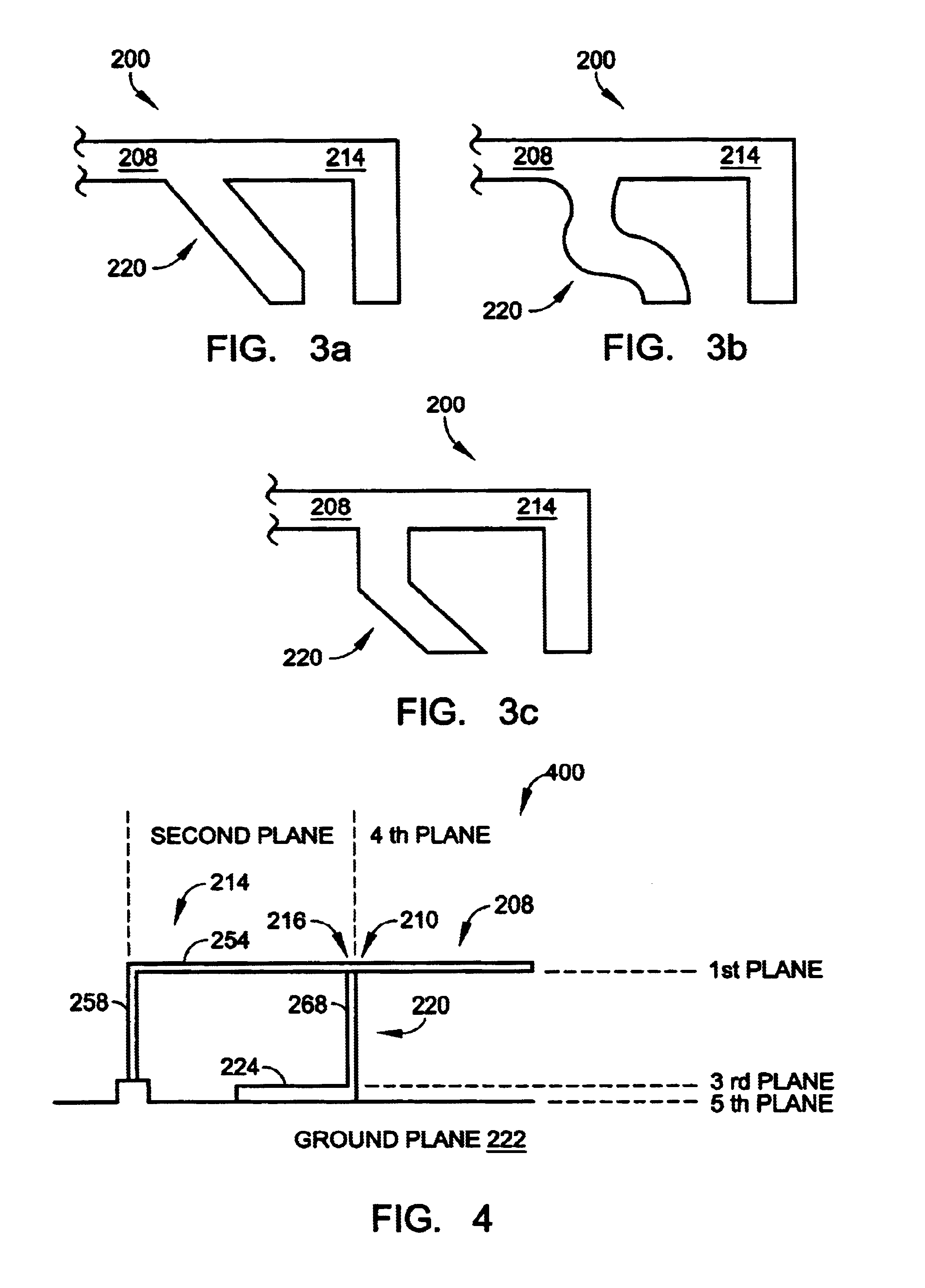Inverted-F antenna
a technology of inverted antennas and antennas, applied in the direction of elongated active element feeds, resonant antennas, antenna earthings, etc., can solve the problems of difficult design of planar antennas that offer performance comparable, energy conducted away from antennas, poor performance, etc., to reduce form factors and minimize mutual interference
- Summary
- Abstract
- Description
- Claims
- Application Information
AI Technical Summary
Benefits of technology
Problems solved by technology
Method used
Image
Examples
Embodiment Construction
[0024]FIG. 2 is a plan view depicting the present invention coupled-feed inverted-F antenna. The coupled-feed PIFA 200 comprises a transmission line port 202 including a signal interface 204 and a ground interface 206. Conventionally, the impedance relationship between the signal interface 204 and the ground interface is 50 ohms, however, other impedances are possible. An open radiator 208 has a first end 210 and a second, unterminated end 212. A shorted “L” shaped radiator 214 has a first end 216, connected to the open radiator first end 210, and a second, terminated end 218. A coupled-feed 220 is connected between the transmission line port signal interface 204, and the open radiator first end 210 and the shorted radiator first end 216. That is, the coupled-feed 220 meets the radiator at the junction between the open radiator first end 210 and shorted radiator first end 216.
[0025]The coupled-feed antenna 200 also includes a groundplane. FIG. 2 depicts a groundplane 222 that is cop...
PUM
 Login to View More
Login to View More Abstract
Description
Claims
Application Information
 Login to View More
Login to View More - R&D
- Intellectual Property
- Life Sciences
- Materials
- Tech Scout
- Unparalleled Data Quality
- Higher Quality Content
- 60% Fewer Hallucinations
Browse by: Latest US Patents, China's latest patents, Technical Efficacy Thesaurus, Application Domain, Technology Topic, Popular Technical Reports.
© 2025 PatSnap. All rights reserved.Legal|Privacy policy|Modern Slavery Act Transparency Statement|Sitemap|About US| Contact US: help@patsnap.com



